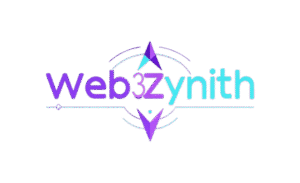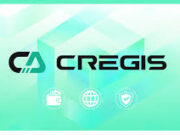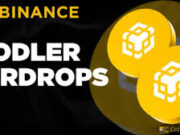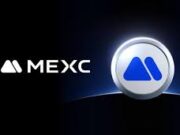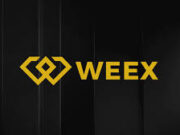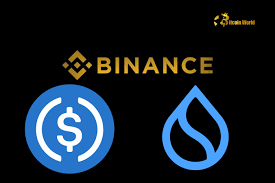As the blockchain landscape evolves, Layer-1 protocols like Sui and Binance Smart Chain (BSC)—now known as BNB Chain—continue to compete for dominance in scalability, speed, and developer adoption. Both platforms aim to power decentralized applications (dApps), NFTs, DeFi, and more, but they take distinct approaches to achieve these goals. This blog post dives into a head-to-head comparison of Sui and BNB Chain in 2025, exploring their architectures, use cases, performance, and ecosystems to help developers, investors, and enthusiasts understand which blockchain might best suit their needs.
Overview of Sui and BNB Chain
Sui: The Scalable Web3 Innovator
Sui is a Layer-1 blockchain launched in May 2023 by Mysten Labs, founded by former Meta engineers from the Diem project. Built using the Move programming language, Sui emphasizes scalability, low-latency transactions, and user-friendly Web3 experiences. Its object-centric data model and parallel transaction processing enable high throughput, making it ideal for gaming, NFTs, and DeFi. With a market cap of $9.41 billion and a SUI token price of $2.77 as of June 2025, Sui has rapidly gained traction, boasting $1.94 billion in total value locked (TVL) and partnerships with giants like Alibaba Cloud and Franklin Templeton.
BNB Chain: The High-Speed DeFi Powerhouse
BNB Chain, formerly Binance Smart Chain, is a Layer-1 blockchain developed by Binance, the world’s largest cryptocurrency exchange. Launched in 2020, it prioritizes low-cost, high-speed transactions and compatibility with the Ethereum Virtual Machine (EVM), making it a go-to platform for DeFi, gaming, and NFTs. Powered by the BNB token, BNB Chain has a market cap of over $80 billion and processes 378.3 transactions per second (TPS) on average, ranking third among blockchains for speed. Its integration with Binance’s ecosystem ensures robust liquidity and user access.
Key Technical Differences
1. Architecture and Consensus Mechanism
- Sui: Sui uses a Delegated Proof-of-Stake (DPoS) consensus mechanism with its Narwhal and Tusk engine, recently upgraded with Mysticeti in 2024 to reduce consensus latency to ~39 milliseconds. Its object-centric model treats assets as independent objects, enabling parallel transaction processing for up to 297,000 TPS. Simple transactions, like token transfers, bypass consensus for near-instant finality, enhancing scalability.
- BNB Chain: BNB Chain employs a Proof-of-Staked-Authority (PoSA) consensus, a hybrid of Proof-of-Stake and Proof-of-Authority, relying on 21 validators to achieve fast block times (~3 seconds). While efficient, its TPS of 378.3 is significantly lower than Sui’s, and its sequential transaction processing limits scalability compared to Sui’s parallel approach. However, EVM compatibility ensures seamless integration with Ethereum tools.
Verdict: Sui’s parallel execution and object-centric model give it a scalability edge, with higher TPS and lower latency. BNB Chain’s PoSA is reliable but less scalable, though its EVM compatibility appeals to Ethereum developers.
2. Programming Language
- Sui: Built on the Move programming language, originally developed for Meta’s Diem project, Sui prioritizes security and flexibility. Move prevents common vulnerabilities like re-entrancy attacks and supports Sui’s object-centric design, enabling developers to create dynamic, composable assets. However, Move’s relative obscurity creates a learning curve for developers.
- BNB Chain: BNB Chain uses Solidity and the EVM, making it accessible to Ethereum developers. This compatibility allows dApps to be ported easily from Ethereum, fostering rapid adoption. However, Solidity’s vulnerabilities, such as re-entrancy risks, require careful coding.
Verdict: Sui’s Move language offers superior security and aligns with its innovative architecture, but BNB Chain’s EVM compatibility makes it more developer-friendly for those already in the Ethereum ecosystem.
3. Transaction Fees and Cost Efficiency
- Sui: Sui’s gas fees are low and stable, thanks to its dynamic fee mechanism and horizontal scaling. Fees are paid in SUI tokens, often costing less than $0.01 per transaction, making it attractive for high-frequency use cases like gaming. The object-centric model reduces computational overhead, further lowering costs.
- BNB Chain: BNB Chain is renowned for low fees, averaging $0.10–$0.50 per transaction, paid in BNB. While affordable compared to Ethereum, fees can spike during network congestion, as seen in high-demand periods. Its single-machine validator design limits horizontal scaling, potentially impacting fee stability as usage grows.
Verdict: Both blockchains offer low fees, but Sui’s design ensures greater fee stability and lower costs, especially for high-throughput applications.
Performance and Scalability
- Sui: Sui’s ability to process 297,000 TPS, with real-world averages of 854.1 TPS, places it among the fastest blockchains, second only to Solana (1,053 TPS). Its parallel processing and lack of system timeouts enable sub-second finality, ideal for real-time applications. Recent upgrades, like Mysticeti, have slashed latency by ~80%, positioning Sui as a leader in scalability.
- BNB Chain: BNB Chain’s 378.3 TPS is impressive but lags behind Sui and Solana. Its sequential processing and reliance on a limited validator set constrain scalability, though its 3-second block time ensures decent performance for DeFi and trading. Network congestion, as seen during 2021’s DeFi boom, can cause delays.
Verdict: Sui outperforms BNB Chain in raw speed and scalability, making it better suited for high-throughput, low-latency use cases.
Ecosystem and Adoption
Sui Ecosystem
Sui’s ecosystem is rapidly expanding, with $1.94 billion in TVL and over $90 billion in DEX trading volume as of May 2025. Key developments include:
- DeFi: Platforms like Cetus Protocol account for over half of Sui’s trading volume, and integrations like OKX’s xBTC highlight its Bitcoin-based asset growth.
- Gaming and NFTs: Partnerships with NHN and Adidas for NFT-based gaming (e.g., XOCIETY) showcase Sui’s strength in low-latency gaming applications.
- Institutional Support: Backing from Binance Labs, Andreessen Horowitz, and Franklin Templeton, plus a proposed SUI ETF by 21Shares, signal strong institutional confidence.
- USDC Integration: Binance’s native USDC support on Sui, announced in February 2025, boosts liquidity and accessibility.
Sui’s focus on Asia, with partnerships like Alibaba Cloud, positions it to capture the region’s 50% share of global crypto users, though its success hinges on China’s crypto policies.
BNB Chain Ecosystem
BNB Chain’s mature ecosystem benefits from Binance’s global reach and 90 million users. Highlights include:
- DeFi: BNB Chain hosts leading DeFi protocols like PancakeSwap, with $2.7 billion in TVL, and supports a wide range of tokens via its Launchpool and Launchpad.
- Gaming and NFTs: Projects like Axie Infinity and The Sandbox thrive on BNB Chain, leveraging its low fees and EVM compatibility.
- Binance Integration: Direct access to Binance’s liquidity, trading pairs (e.g., LPT/USDC, RVN/USDC), and staking programs (e.g., BNB staking for SUI farming) drive adoption.
- Global Reach: BNB Chain’s established presence across regions, including Europe and the Americas, gives it a broader user base than Sui’s Asia-centric focus.
Verdict: BNB Chain’s mature ecosystem and Binance’s infrastructure give it an edge in adoption and liquidity, but Sui’s rapid growth and innovative use cases make it a strong contender, especially in gaming and DeFi.
Use Cases and Target Audiences
- Sui: Sui excels in Web3 applications requiring high speed and low latency, such as:
- Gaming: Its object-centric model supports dynamic NFTs and real-time interactions, as seen in partnerships with NHN and Adidas.
- DeFi: Parallel processing and low fees make Sui ideal for high-frequency trading and AMMs like Cetus.
- NFTs and Digital Assets: SuiNS and composable objects simplify NFT creation and management.Sui’s user-friendly features, like zkLogin and sponsored transactions, target mass adoption in Web3.
- BNB Chain: BNB Chain is a versatile platform with a focus on:
- DeFi: Its low fees and EVM compatibility make it a hub for DeFi protocols like Venus and PancakeSwap.
- Trading and Tokenization: Binance’s Launchpool and new trading pairs (e.g., LPT/USDC) cater to traders and token issuers.
- Cross-Chain Interoperability: Bridges like Wormhole enhance connectivity with Ethereum and Solana. BNB Chain appeals to developers and traders familiar with Ethereum’s ecosystem seeking cost-effective alternatives.
Verdict: Sui is tailored for next-gen Web3 applications like gaming and NFTs, while BNB Chain’s EVM compatibility and DeFi focus make it a broader, trader-friendly platform.
Community Sentiment and Market Trends
- Sui: X posts highlight strong community enthusiasm, with Sui surpassing BNB Chain in daily transactions (185.5M vs. 136.8M) in June 2025. Its $90 billion DEX volume and ETF proposals reflect bullish sentiment, though its $2.77 price is 48% below its all-time high of $5.35.
- BNB Chain: BNB Chain enjoys widespread adoption, with BNB’s price (~$550) and Binance’s global dominance driving sentiment. Its established user base and new listings (e.g., LPT/USDC) maintain its relevance, though it faces competition from faster chains like Sui.
Verdict: Sui’s rapid transaction growth signals strong momentum, but BNB Chain’s entrenched position ensures stability and broader market trust.
Strengths and Weaknesses
Sui
- Strengths:
- High scalability with 297,000 TPS and sub-second finality.
- Secure Move language and object-centric model.
- Growing ecosystem with strong institutional backing.
- Stable, low gas fees for high-frequency applications.
- Weaknesses:
- Move’s learning curve limits developer adoption.
- Asia-centric focus may restrict global reach if China’s crypto policies tighten.
- Early-stage ecosystem compared to BNB Chain.
BNB Chain
- Strengths:
- EVM compatibility enables easy dApp migration.
- Massive liquidity and user base via Binance’s ecosystem.
- Mature DeFi and NFT ecosystem with proven projects.
- Strong global presence across regions.
- Weaknesses:
- Lower TPS (378.3) and scalability compared to Sui.
- Centralized validator model (21 validators) raises decentralization concerns.
- Fee spikes during network congestion.
Which Blockchain Should You Choose?
- Choose Sui if you’re a developer or investor focused on:
- High-speed, low-latency applications like gaming or DeFi.
- Innovative Web3 use cases with dynamic NFTs and composable assets.
- Long-term potential in a rapidly growing ecosystem with institutional support.
- Choose BNB Chain if you prioritize:
- EVM compatibility for easy dApp development or migration.
- Access to Binance’s liquidity and global user base.
- A mature ecosystem with established DeFi and NFT projects.
Final Thoughts
In 2025, Sui and BNB Chain represent two distinct visions for Layer-1 blockchains. Sui’s cutting-edge architecture, with its parallel processing and Move language, positions it as a leader in scalability and Web3 innovation, particularly for gaming and DeFi. Its rapid growth, evidenced by $90 billion in DEX volume and native USDC support on Binance, signals a bright future. Meanwhile, BNB Chain’s EVM compatibility, low fees, and integration with Binance’s ecosystem make it a reliable, trader-friendly platform with unmatched liquidity and adoption.
For developers building next-gen dApps, Sui’s speed and flexibility are hard to beat. For traders and Ethereum developers, BNB Chain’s familiarity and infrastructure remain compelling. Ultimately, the choice depends on your priorities—whether it’s pushing the boundaries of Web3 with Sui or leveraging a proven ecosystem with BNB Chain. Both blockchains are shaping the future of crypto, and their competition will drive innovation in the years ahead.
